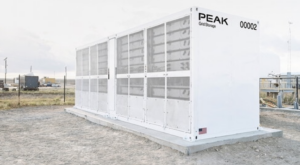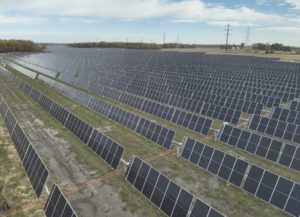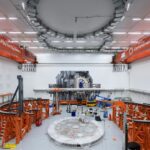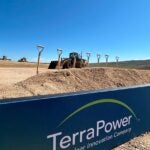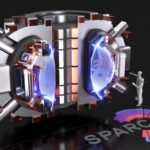Virginia’s governor and other officials on Dec. 17 said the state has a plan for the world’s first nuclear fusion power plant. Commonwealth Fusion Systems (CFS) on Tuesday announced it will build a 400-MW fusion facility on a 100-acre site at the James River Industrial Park in Chesterfield County.
Massachusetts-based CFS, founded in 2018, and whose CEO Bob Mumgaard was the subject of a 2020 POWER Interview, said it conducted a global search for a suitable location for the project. The company will lease the land from Virginia-based Dominion Energy, which originally had planned a natural gas-fired power plant at the site.
“Fusion is the process that happens inside the stars. It’s the most common process in the entire universe,” Mumgaard said Tuesday. “It’s the thing that creates all the heat and light. On Earth, when we get it to work, we’ll use it to make electricity in fusion power plants. That electricity will be clean, it’ll be [reliable], it’ll be safe.”
Virginia Gov. Glenn Youngkin touted the project’s job creation and economic development potential during Tuesday’s announcement. “Commonwealth Fusion Systems plans on building the world’s first grid-scale commercial fusion power plant in the world, full stop, and it’s going to be right here in the commonwealth of Virginia,” said Youngkin during a presentation Tuesday in Richmond. Youngkin said the CFS power station would bring billions of dollars in economic development, along with creating hundreds of jobs.
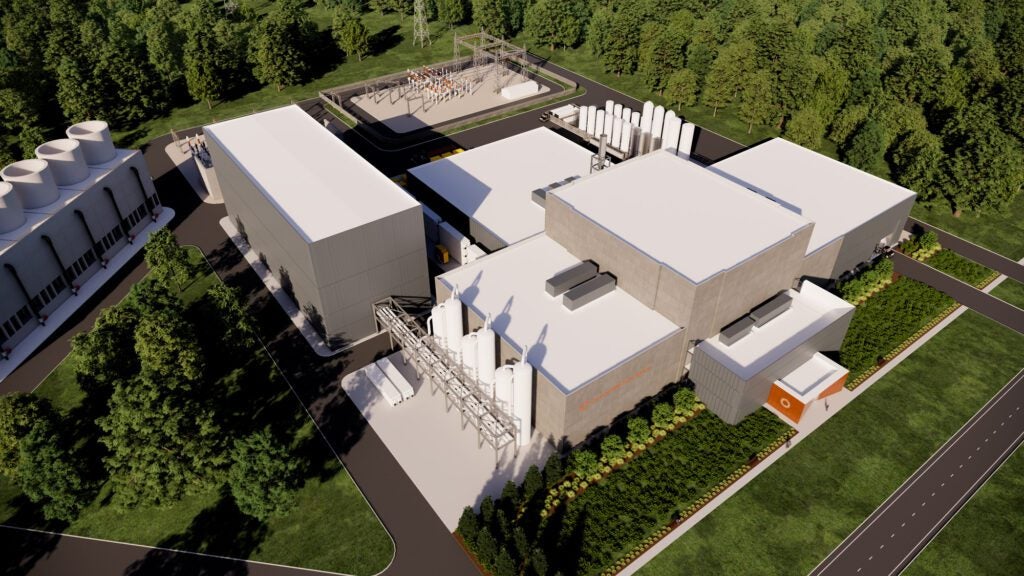
“Our customers’ growing needs for reliable, carbon-free power benefits from as diverse a menu of power generation options as possible, and in that spirit, we are delighted to assist CFS in their efforts,” said Dominion Energy Virginia President Edward H. Baine in a statement.
CFS is currently building its SPARC demonstration plant in Massachusetts. That project is designed to support the ARC technology planned for the Chesterfield facility. Officials said Virginia offered $1 million from the Virginia Energy Clean Energy Innovation Bank, $1 million from Chesterfield County, and a sales and use tax exemption for the plant’s equipment to secure the project, which also will receive funding from the U.S. Dept. of Energy (DOE).
CFS, with more than 1,000 employees, calls itself the world’s largest private fusion company. The company said its has raised more than $2 billion for its efforts to commercialize its fusion technology. CFS was spun out of the Massachusetts Institute of Technology.
Operation Expected by Early 2030s
Officials on Tuesday said the power plant could be operational by the early 2030s. Fusion technology, unlike traditional fission-based nuclear power plants, replicates the energy-producing process of the sun. Energy analysts have said fusion could provide a clean, sustainable, and perhaps limitless supply of energy.
“You won’t need a pipeline to bring the fuel in, or a smokestack for the exhaust,” said Mumgaard.
“This announcement shows that fusion is no longer a far-off dream … it’s becoming a reality,” said Sehila Gonzalez de Vicente, Global Fusion Director at Clean Air Task Force. “Fusion has the potential to revolutionize our energy systems by providing clean, firm power. The deployment of this plant signals a major step toward meeting our climate goals while addressing growing electricity demand from data centers and the broader artificial intelligence and high-performance computing ecosystem. However, to realize fusion’s full potential will require adequate regulatory frameworks that can attract investment and facilitate the deployment of more projects like this one. A supportive regulatory environment will not only ensure the safe and efficient development of fusion energy, but also positions the U.S. as a global leader in fusion energy innovation.”
According to the DOE, fusion technology favored by many researchers today works by combining hydrogen isotopes (deuterium extracted from water and tritium from lithium) under extreme heat and pressure. Powerful magnets are used to fuse the elements. That process generates heat, which is used to boil water to create steam. The steam spins a turbine, producing electricity.

Scientists and researchers at Lawrence Livermore National Laboratory in California in 2022 announced they had made a breakthrough in fusion technology by achieving a net energy gain from a fusion reaction.
That reaction used lasers. The CFS technology is different, relying on a tokamak, a donut-shaped device that confines and fuses molecules.
CFS said the power plant would be built on about 25 acres of the Chesterfield site. It would provide a needed source of power generation for Virginia, which is home to most of the country’s energy-intensive data centers. “It’s a reasonable hypothesis that the growth in data centers in Virginia will very happily take the power that is generated at this plant,” Youngkin said.
CFS Will Pay for Project
The governor said CFS will finance the project, and said costs would not be passed on to Virginia electricity customers. Officials said the facility will operate as an independent power producer, and would sell its electricity to specific offtakers via power purchase agreements. It also could sell power directly into the regional PJM Interconnection market.
CFS has said it is seeking customers to buy the power from the facility. Rick Needham, the company’s chief commercial officer, said the company has “been in lots of conversations with potential customers.”

A Virginia legislative group in a recent report said energy demand from the state’s data centers, about 10,000 MW today, could reach 30,000 MW by 2040 if transmission infrastructure was available.
Dominion Energy and Appalachian Power, the state’s largest utilities, have said they are looking at using small modular nuclear reactors, or SMRs, to meet future energy demand. Dominion also is pursuing more generation from renewable resources and natural gas.
Rip Sullivan, a Virginia state lawmaker, in a statement on Tuesday said he would introduce legislation to define fusion energy in the state code. Sullivan pointed to the Virginia Clean Economy Act (VCEA), a 2020-enacted law to support decarbonizing the state’s power grid. Fusion would be defined as “zero-carbon electricity” under the VCEA.
“Since the VCEA’s passage, we have succeeded in driving energy innovation in the commonwealth, and today marks another important step in what has been a remarkably successful effort—a step that would not have been possible had Virginia declined or abandoned the opportunity and responsibility it took to lead in clean energy,” Sullivan said.
Officials noted that state officials were able to sign off on the fusion project because the U.S. Nuclear Regulatory Commission earlier determined that fusion technology would not require federal licensing, unlike fission technology. That means fusion projects can be approved at the state level.
The project still will need permits from local, state, and federal authorities. It also will need a conditional-use permit from Chesterfield. The local permit application is expected to be reviewed by Chesterfield officials next year and could be approved as soon as next summer.
—Darrell Proctor is a senior editor for POWER.



